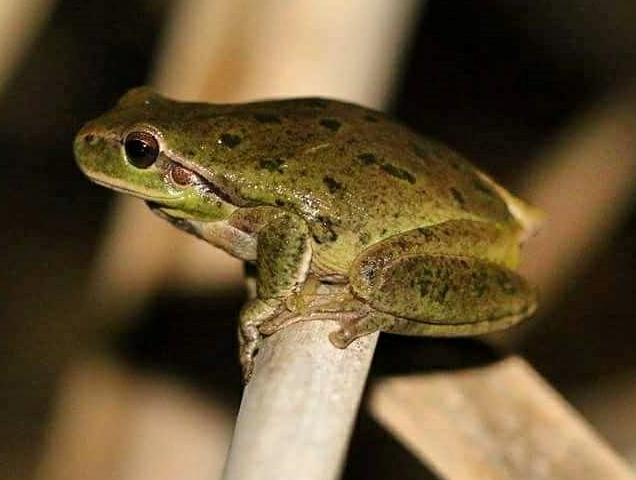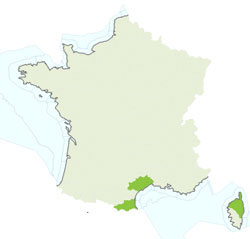
The Painted frog is medium size 6 or 7cm and has the look of a small frog with a small head that is not distinct from its body and a pointed nose, the upper mouth is toothed and the tongue, which is not projectile, is stuck firmly to the floor of the mouth. The ears which are only just visible are covered with skin; the eyes have roundish triangular pupils. The skin on the head is smooth which adds to its frog like appearance and the male has no vocal sacs. Colouration can be extremely variable; the underside is generally light with glints of yellow or red.

Although frequently solitary it can occasionally be found in colonies. It is diurnal but mostly active during the night, it accepts fresh or salty water in pools, rivers, lakes, wells and other underground cavities remaining close to water at all times. It preys on insects, worms, molluscs, crustaceans and occasionally tadpoles
Coupling can start in February and continue until November with an interruption during the hot months of summer, especially if there is a drought or water shortage. The females lay around 1000 eggs which can float on the surface or sink to the bottom; egg depositing can be repeated a number of times and large numbers of eggs and tadpoles are frequently lost due to the water drying up. Incubation takes 5 to 10 days and metamorphosis after about a month.
The painted frog Discoglossus pictus is to be found mainly in Spain and Portugal, the only sites in France are in the extreme southwest where there has been some reintroduction in the Pyrenees region. It has two close cousins Discoglosse Sarde Discoglossus sardus found in Corsica, Sardinia and the Cte dHyres and its archipelago. Another species Discoglosse Corse Discoglossus montalentii is only found on Corsica.

All three species are menaced and vulnerable although reasonable populations of D. pictus are to be found in the Iberian peninsular. All three are listed at the national level art.1. Habitats directive annexes 2 & 4, Berne convention annexes 2 & 3.



